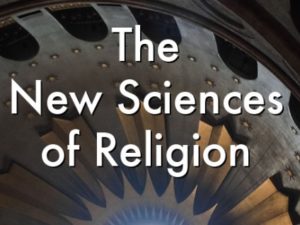Gravity Is the Ultimate Scrooge Principle, Part II
Gravity would destroy the universe if it were not balanced by motion. As our last blogpost explained, wealth can behave like gravity, always making the rich richer and the poor poorer. If this is so, then what could be the economic force that counterbalances wealth the way motion counterbalances gravity? Let’s look at motion more carefully.
There’s not just one kind of motion that withstands gravity. On different size scales, different kinds of motion do the job, but on each scale there are two main kinds, and they have to be balanced against each other in order to succeed together against gravity. The two kinds of motion are circular (organized, predictable) and random (unorganized, unpredictable on the individual level although generally predictable on large collective levels). Planets in our solar system and stars in the disk of our galaxy are in nearly circular orbits, but in the dark matter halo of the galaxy it is the random motion of the dark matter particles as they fly every which way that keeps the dark matter spread out. In elliptical (no-disk) galaxies and in the bulges in the centers of spiral galaxies, the motion of the densely packed stars is random, not circular. If we zoom in to the much smaller size scale of a single star, the matter that that star is made of stays together because of gravity, but the star doesn’t collapse into a black hole except under very special circumstances, because the random thermal motions of the atoms making it up (called “pressure”) prevent it from collapsing. For the economic analogy, the counterbalancing force most likely needs to be a combination of random and organized motions on various size scales. Wealth needs to be kept in motion to balance its tendency to concentrate!
What might that mean in practice? Circular-motion redistribution would be predictable, and everyone in a certain category could count on it—for example, free public education for all children, police and fire protection, and public health and health care in almost all industrialized countries. By contrast, random-motion redistribution would be less uniform. Gambling is one way that this happens across human cultures; in the United States legal gambling accounts for more than 10% of all leisure expenditures. Also, human abilities are distributed somewhat randomly, so scholarships based on merit and grants for the arts and scientific research are ways to keep money in useful non-uniform motion. Both circular and random paths of redistribution are necessary to keep a society both stable and dynamic. How to achieve such an economy is a huge question crying out for serious attention and creativity, and it is much more difficult at the international level, where there is no government and few shared political ideals. In order for the world to cooperate in developing a sustainable global civilization, concentration of wealth must be effectively counterbalanced, but this is not a moral issue—it’s an inevitable situation that can be dealt with pragmatically, not divisively.
As we emphasized in our last blogpost, among the rich, as among the poor, there are certainly some corrupt people and criminals, but in many cases it is no more the fault of the rich that they get richer than it is the fault of the poor that they get poorer: it’s in the nature of wealth. However, the responsibility of a society with higher values than money—such as life, liberty, and the pursuit of happiness—must be to discover, cultivate, and uphold those economic forces that can counterbalance this natural tendency toward concentration of wealth and play a permanent role analogous to motion in opposing gravity. The fact that the cosmos effectively counterbalances gravity, the Ultimate Scrooge Principle, suggests that this is possible. We hope this can inspire people in the U.S. and around the world to counterbalance the political and economic forces that concentrate wealth.
Originally published on the SFGate.com City Brights Blog.



